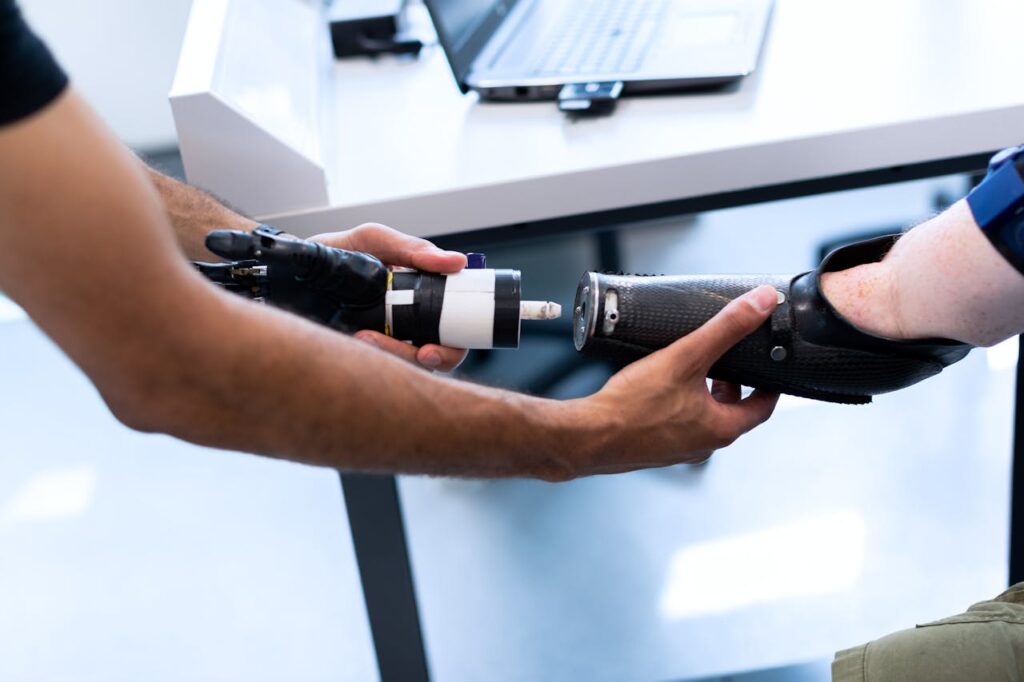Two years after it came to be, AI has already penetrated every aspect of our lives. Watch any commercial break for proof. You’ll be hit with four tedious ads about four tedious AI integrations.
Love it. Hate it. Your feelings don’t matter. AI has sunken its robotic claws into our lives, and it’s not letting go.
And yet some things really do feel artificial intelligence proof. Could AI be replacing jockeys? Let’s get into it.

Post Contents
Robot Jockey Overview
Robot jockeys are real—and they aren’t new either. In fact, they’ve been in use since 2004, primarily in the world of camel racing. The shift toward robotic riders was not born out of technological curiosity, but rather from a serious human rights issue.
For decades, some Middle Eastern countries had come under fire for using young children—some as young as four years old—as camel jockeys. Many of these children were victims of human trafficking, often sold into the trade by families suffering from extreme poverty. The reasoning behind their use was simple: lighter riders meant faster camels. However, as international pressure mounted, reforms were put in place. By 2005, Qatar had completely banned the use of human jockeys, replacing them with lightweight, remote-controlled robots.
These robot jockeys are still in use today. Over the years, they have evolved, with some models featuring mechanical arms to control the reins and even speakers that allow owners to shout encouragement to their camels. While current models are controlled remotely by human operators, advances in artificial intelligence could eventually eliminate the need for direct human input.
This raises an interesting question: could similar technology ever be applied to professional horse racing? While AI-controlled robotic jockeys might be technically possible, would the industry—and its deep-rooted traditions—ever embrace such a shift?
Hard No
Jockeys aren’t just sixty-inch decorations resting atop your favorite horse. They are athletes. Part of the team.
The question—will AI replace jockeys—is like asking if it will replace catchers. Or point guards. Or Jake Paul. (For that latter point, one can only hope.) But when you phrase the question that way, it feels silly. Even if digital technology could replace athletes, who would want it to?
Horse racing is built on tradition. Events like the Kentucky Derby have been around for more than a century, complete with ceremonies, rituals, and guaranteed experiences rooted in history. AI just doesn’t fit the equation.
In the world of camel racing, where technology has been used to eliminate truly appalling human rights violations, AI might be a good fit. In championship horse racing, it isn’t.
Appropriate Integrations
None of this is to say that AI doesn’t have a place in professional horse racing. In fact, it’s already making a significant impact—just not in the saddle.
For fans, AI is being used to calculate odds more accurately than ever before. Sports betting has been driven by big data for years, and artificial intelligence is uniquely suited to analyzing massive datasets, identifying trends, and making real-time adjustments. This means sharper odds, more refined predictions, and ultimately, a more sophisticated betting experience.
On the training side, AI is proving to be an invaluable tool for those working behind the scenes with champion-level horses. Trainers, veterinarians, and owners already analyze massive amounts of information, from biometric data and performance metrics to nutrition plans and recovery schedules.
AI helps streamline this process, integrating and interpreting data at speeds no human could match. With machine learning, trainers can anticipate injuries before they happen, optimize training regimens, and even fine-tune race strategies based on environmental factors and historical patterns.
AI may never replace the human element in the saddle, but when it comes to making races smarter, safer, and more competitive, its role is only growing.
AI and the Kentucky Derby
At last year’s Kentucky Derby, an AI company correctly predicted the Superfecta. For those who do not know, this means that they not only identified the winner but the top four finishers.
Correctly betting the Superfecta pays 540 to 1. Nice odds, if you can get them, but also indicative of how truly difficult it is to get this bet right. No other expert analyst came close.
The group behind this prediction was Unanimous AI. They made their race forecast using “swarm intelligence.” Basically, they took twenty real people and had them make their predictions. The results were then synthesized using AI.
That’s something to pay attention to, particularly as the road to the 2025 Kentucky Derby prep races edges closer and closer to the big event. How are the top contenders fairing in prep events?
Groups like Unanimous AI may be using that information to make their forecasts. Artificial intelligence analysis may add a new level of accuracy to sports forecasting.
Just remember that it can’t tell the future. Anything can happen during the most exciting two minutes in sports. That uncertainty is what makes the Kentucky Derby so thrilling.